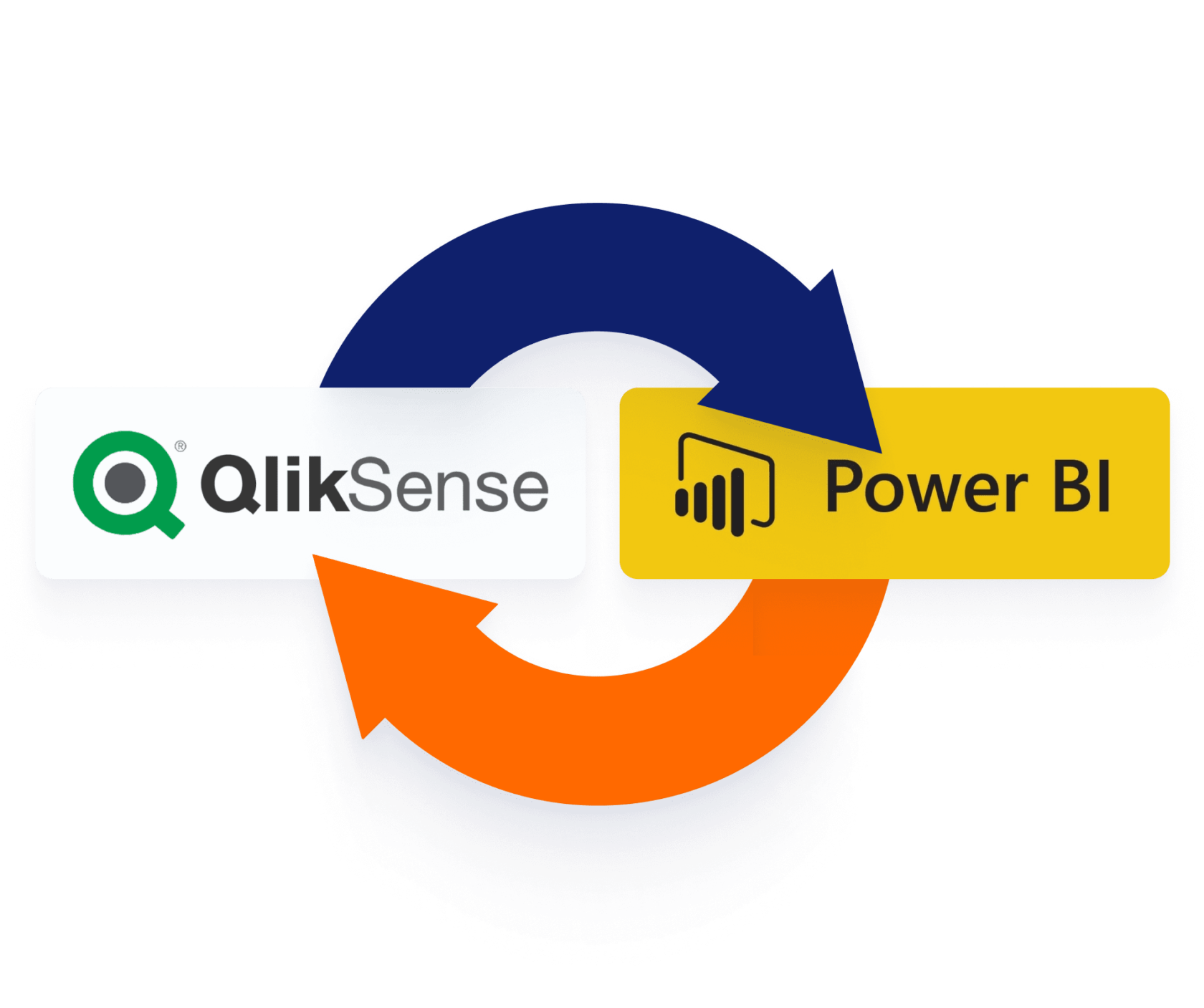Power BI vs. Qlik Sense: Making the Right Business Intelligence Choice

In the world of Business Intelligence (BI), the battle between Microsoft Power BI and Qlik Sense rages on. Both are well-established tools, but when it comes to choosing the best fit for your company, the decision isn’t always straightforward. Should you opt for the tool seamlessly integrated into the expansive Microsoft ecosystem, or the solution from a company that’s been pioneering BI analysis since the early ’90s? Let’s dive into the details to help you make an informed decision.
Please note that this article focuses solely on the analysis of data visualization tools, and not the database management system. If you’re looking for a comprehensive comparison, it’s important to contrast Qlik Sense’s innovative Associative Engine with the combination of Power BI and a system like SQL Server.
Visualizations:
When it comes to visualizations, both Power BI and Qlik Sense offer a range of options. Power BI boasts 30 base visualizations, while Qlik Sense provides 16. For those with more refined tastes, both platforms allow you to create and utilize custom visualizations, either from a community of users or by crafting your own. Power BI’s larger user base translates to a more extensive library of custom visuals. However, Qlik Sense takes a different approach, offering a more streamlined experience with fewer options. This simplicity can result in attractive reports without overwhelming complexity, a balance that Power BI users may need to strike themselves.
User Experience:
The user experience diverges significantly between the two platforms. Power BI offers a traditional modeling approach, requiring developers to define all relationships in advance. In contrast, Qlik Sense employs its Associative Engine technology, designed for rapid querying and exploration of related and unrelated data. This engine which relies on a many-to-many full outer join with indexed data, reduces the need for extensive data preparation. While Power BI is a more natural fit within Microsoft environments, its rapid monthly updates can sometimes pose challenges for end users to keep up with.
Scripting:
Scripting is where the two platforms notably differ. Qlik Sense leans towards a more script-heavy environment, demanding more code snippets for fine-tuning visualizations compared to Power BI. Power BI utilizes two languages: Power Query M for ETL (Extract, Transform, Load) and DAX for calculations. On the other hand, Qlik Sense’s scripting language will feel familiar to those accustomed to SQL, while DAX offers a higher degree of complexity. Both platforms provide online Q&A environments for troubleshooting and inspiration, but Qlik Sense’s smaller user base results in fewer available solutions.
Cost:
Both Power BI and Qlik Sense offer a variety of licensing options. Determining which is more expensive depends on specific needs and budget considerations. Both also offer free versions that can be installed locally, making it convenient for evaluation purposes.
Conclusion:
In the showdown between Power BI and Qlik Sense, there’s no definitive winner. Your choice ultimately hinges on your organization’s unique needs, preferences, and existing infrastructure. Power BI shines with its extensive library of custom visuals and the robustness of its scripting language (DAX). Meanwhile, Qlik Sense prioritizes user-driven data exploration and offers a more SQL-like scripting experience. Ultimately, the decision should align with your organization’s BI goals.
In the ever-evolving world of BI, there’s no shortage of factors to consider. We invite you to share your thoughts and considerations in the comments below. Your insights are valuable in helping others navigate the complex landscape of Business Intelligence tools.